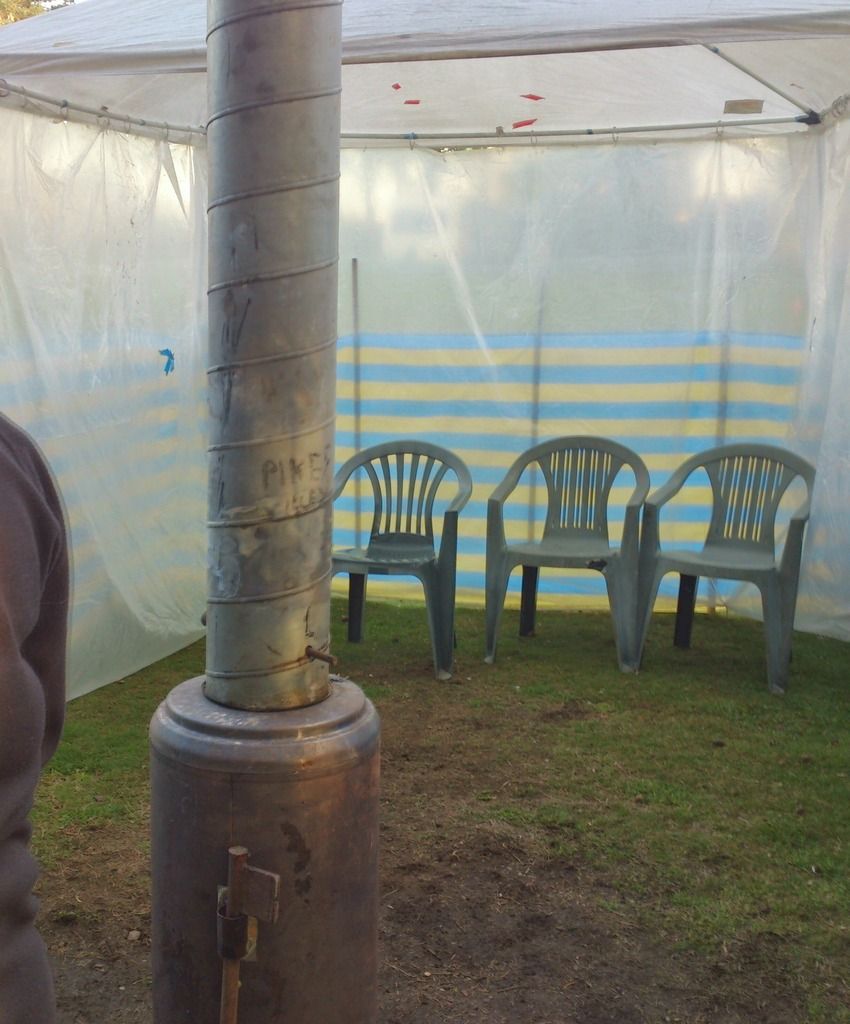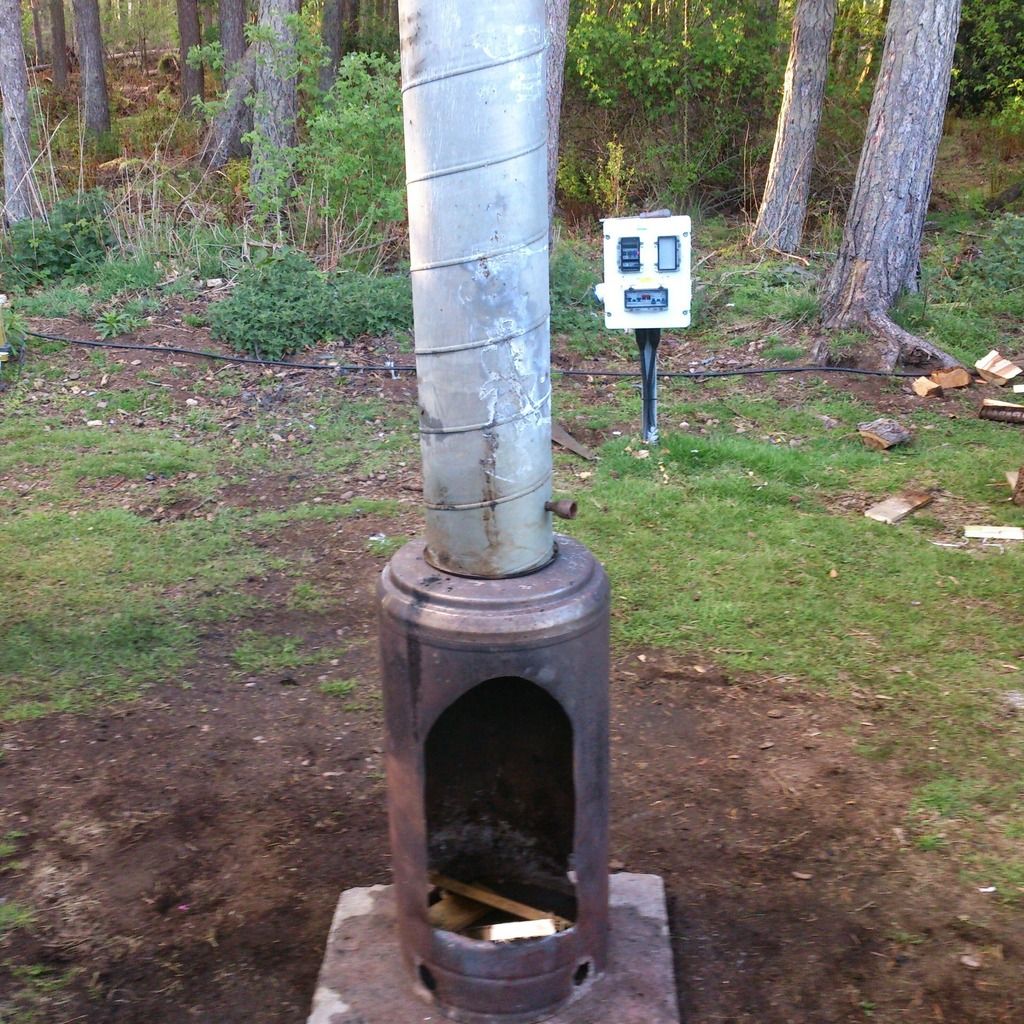Hi, new to this forum, so I don't know if this is the right forum / place for this, but I have just completed a diy wood burner from scrap metal I found around work etc. I work as a stonemason and this little project was an idea to heat up a little cutting shed in winter that I'll be building.
Question I have is that when I close the door on the stove (granted I know it's got gaps which I'll fix) it starts to smoke exponentially and the fire rapidly starts to die out! Do I need more air intakes underneath the fire? I have three holes already but I don't know if it's enough? I still have the jerry can spout in place, then the tin cans placed round it, which maybe isn't large enough to let the smoke escape? Should I cut the first tin to fit into the jerry can for the bigger diameter flue?
I was going to install a baffle to direct as much heat to the jerry can handles for cooking on, but I imagine installing this at this stage would make the smoking worse!
So far I have to keep the door open which is just as useful as an open fire and doesn't conserve the wood.
As I say I'm new to this and I basically haven't a clue haha. So any ideas / help would be much appreciated!
Many thanks,
Simon



Question I have is that when I close the door on the stove (granted I know it's got gaps which I'll fix) it starts to smoke exponentially and the fire rapidly starts to die out! Do I need more air intakes underneath the fire? I have three holes already but I don't know if it's enough? I still have the jerry can spout in place, then the tin cans placed round it, which maybe isn't large enough to let the smoke escape? Should I cut the first tin to fit into the jerry can for the bigger diameter flue?
I was going to install a baffle to direct as much heat to the jerry can handles for cooking on, but I imagine installing this at this stage would make the smoking worse!
So far I have to keep the door open which is just as useful as an open fire and doesn't conserve the wood.
As I say I'm new to this and I basically haven't a clue haha. So any ideas / help would be much appreciated!
Many thanks,
Simon







